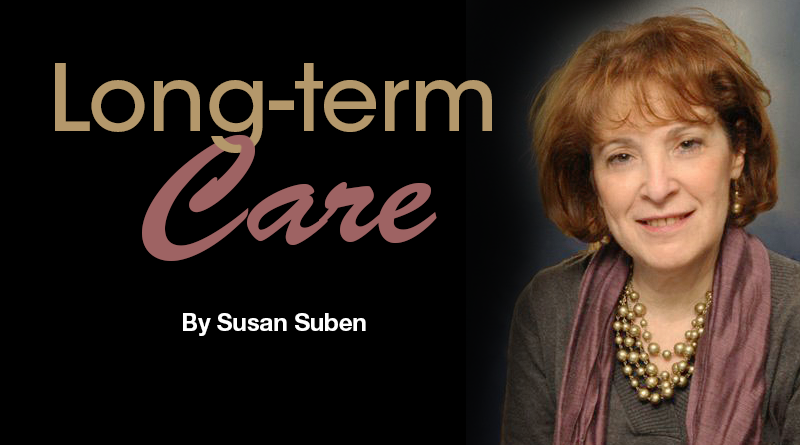Help When You Need It: ‘Transition Care’
By Susan Suben
During the 10 years that I took care of both my parents, there were many visits to many hospitals for numerous emergencies.
When it was time for their discharge, doctors, nurses and social workers barraged us with care instructions, prescriptions and physical therapy scripts.
I was told different Medicare approved agencies would be calling us to arrange for assessments and care visits. Most of it went in my one ear and out the other. It was overwhelming, intimidating and scary for me as their caregiver to think that I might do something wrong and land them back in the hospital.
Today, individuals are discharged from a hospital much sooner and hospitals are encouraged not to have re-admissions because they could lose federal funding. Hence, the “observation stay” that puts individuals in limbo and can sometimes deny them Medicare coverage if they need rehabilitation. This is a very important issue to discuss with a hospital if your loved one needs to go into a facility after they are discharged.
In order to maintain low re-admission rates and assure quality care after a discharge, hospitals are establishing guidelines and programs for “transition” care. This new approach was prompted by the passage of the CARE Act that took effect in April.
CARE stands for Caregiver Advise, Record, Enable. It updates New York’s public health law and “requires hospitals, at a patient’s request, to provide discharge instructions and post-release care plans to a designated caregiver.”
This act was designed to assist the four million NYS families who serve as caregivers so that their loved ones can stay in their own homes and hopefully not re-enter a hospital or be admitted into a nursing home.
State Sen. James L. Seward (R/C/I-Oneonta), a co-sponsor of the bill, stated that “when an individual leaves the hospital, there are a number of steps to recovery, and quite often a loved one, without formal medical training, is called upon to help make sure that recovery goes well.”
The Pulse publication, in its Oct. 27, 2015, ran an article by writer Claire Hughes that states that CARE permits a hospital patient to list a family caregiver in his/her medical records. “The designated caregiver must be given information before a patient is discharged, including instructions and demonstration of tasks they will be expected to perform at home.”
According to AARP, the bill features three important provisions:
• The name of the family caregiver is recorded when a loved one is admitted into a hospital or rehabilitation facility;
• The family caregiver is notified if the loved one is to be discharged to another facility or back home; and
• The facility must provide an explanation and live instruction of the medical tasks — such as medication management, injections, wound care, and transfers — that the family caregiver will perform at home.
Local hospitals are actively developing their transition care units.
Strong Memorial Hospital started a “Virtual Care Unit” that concentrates on getting a patient through the precarious first 30 days after a hospital discharge.
The VCU team “works closely with social workers to pre-empt potential stumbling blocks (e.g., trouble securing transportation to and from follow-up appointments); hand-selects supplemental transition coaching and telehealth programs administered by Visiting Nurse Service; and conducts one- and three-week-post-discharge “rounding” meetings — multidisciplinary huddles that ensure fluid, frequent communication between outpatient care managers and the hospital’s cast of health care professionals.”
SUNY Upstate Medical Center recently created a department of transitional care. Diane Nanno, department director, stated, “A patient that leaves the hospital is still our patient, the care we provide extends beyond the building walls…Our patients are members of our community and we want to take care of them. It’s not just about getting people out the door, it’s about providing quality outcomes and quality of life.”
Transition care teams generally “consist of social workers, case managers, continuum of care coordinators and patient educators who work in collaboration with all disciplines such as physicians, pharmacists, and therapists in an effort to help families make informed decisions regarding care.” Establishing relationships with post-acute providers is also a critical part of the process after a discharge.
As our population ages, there will be more individuals transitioning from a hospital stay to their homes. It is imperative that our health care system deal with the challenges and uncertainty faced by patients and their caregivers. The CARE act is intended to be a first step in that direction.
In thinking about my parents when they were in the hospital, all they wanted was to return home and all I wanted for them was to be home — secure, unafraid and getting healthy. As caregivers, we no longer have to feel insecure. We now have the support and guidance to provide a safe environment and quality of life for our loved ones when they return home from a hospital stay.
Susan Suben, MS, CSA, is president of Long Term Care Associates, Inc. and Elder Care Planning, and a consultant for Canandaigua National Bank & Trust Company. She can be reached at 800-422-2655 or by email at susansuben@31greenbush.com.

